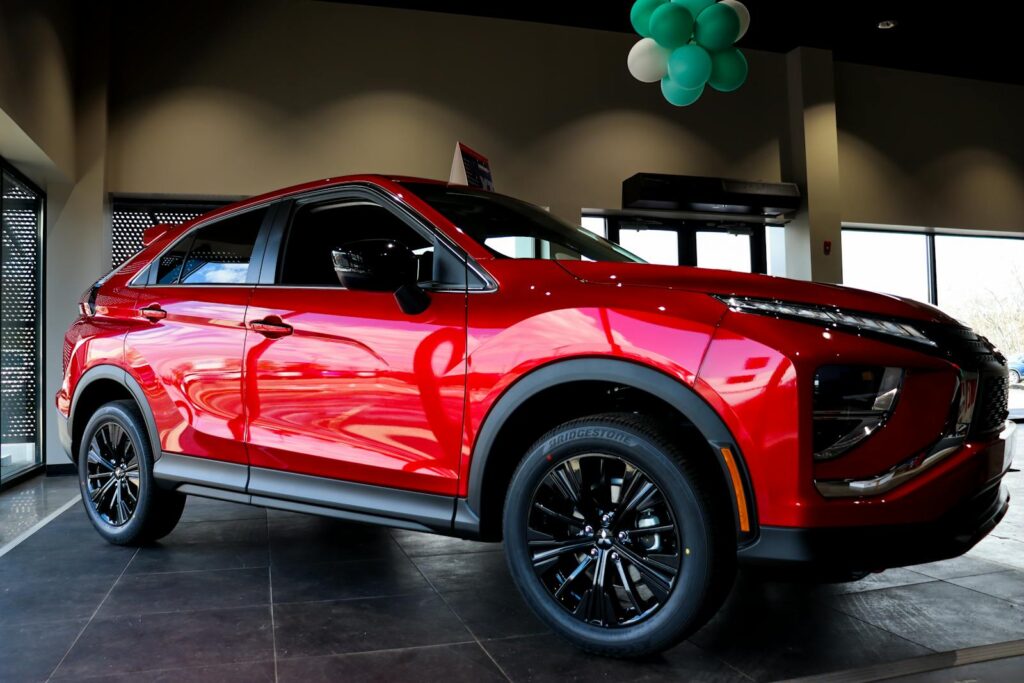
Buying a new or pre-owned vehicle can be one of life’s most exciting milestones. The allure of a shiny new car, the distinctive smell of a fresh interior, or the promise of enhanced performance can easily sweep us off our feet. Yet, amidst this excitement, it’s all too easy to overlook the intricate dance of negotiation that unfolds when you step onto a dealership lot. This is where your dream car meets the dealer’s bottom line, and understanding the dynamics at play is crucial for a successful outcome.
Dealerships are, at their core, businesses built to maximize profit, and while many operate with integrity, some employ tactics that can disadvantage less-informed buyers. From the moment you begin your online search to the final signature on the contract, there are numerous strategies designed to steer you towards a less-than-optimal deal. Researching car stats and comparing models is just one piece of the puzzle; equipping yourself with knowledge about common sales tactics is the ultimate defense against costly mistakes and unwanted surprises.
That’s why we’re here to empower you with invaluable insights, directly from the experiences shared by salespeople and financial experts alike. This comprehensive guide will pull back the curtain on some of the most frequently encountered dealership tactics, transforming you from a potential target into a savvy negotiator. By understanding these approaches, you’ll be able to spot red flags, ask the right questions, and ultimately, close on a car with confidence, ensuring you drive away with not just a great vehicle, but a great deal too. Let’s dive in and uncover the tricks of the trade, so you can stay in control.

1. **The Bait and Switch**Imagine spending hours online, poring over listings, and finally spotting a car that seems absolutely perfect for your budget and needs. It’s a fantastic deal, almost too good to be true, and you’re eager to see it in person. You head to the local dealer, buzzing with anticipation, only to be met with the disheartening news: the car you saw online is “apparently no longer available.” This classic deception is known as the “Bait and Switch,” and it’s a tactic designed purely to get you through the dealership doors.
Once on the lot, the salesperson, ever so helpful, quickly pivots to a “similar model” that seems right for you. The catch? It comes with a significantly higher price tag, a detail they conveniently hope you’ll overlook in your eagerness to buy. The aim here is to capitalize on your time investment and the emotional connection you’ve already started to form with the idea of a new car. They count on you being less likely to walk away after making the effort to visit.
This tactic is so “downright dirty (grungy, even)” that the Federal Trade Commission has explicitly dubbed it illegal under its newly implemented CARS Rule (Combating Auto Retail Scams). Despite this legal prohibition, some “sleazy salespeople” might still attempt it, banking on buyers being unaware of their rights or too hesitant to challenge the situation. It’s a stark reminder that even with regulations, vigilance remains your strongest asset.
Your defense against the Bait and Switch is straightforward: “If the deal you were promised isn’t real once you show up, leave.” Do not let them cajole you into looking at alternatives or rationalize the price difference. Your time and money are valuable, and a dealership that starts with dishonesty is not one you want to do business with. Be firm, know what you’re looking for, and if the advertised vehicle isn’t available as promised, consider it a clear sign to seek out a more trustworthy seller.
Read more about: Beyond Repair? These 13 Stellar Performances Couldn’t Quite Rescue Their Movies

2. **The Misleading Car Photo**In an age where visuals dominate online interactions, car dealerships have, unfortunately, adopted a tactic reminiscent of dating apps: the misleading profile picture. You’ll browse online and encounter a “pretty y car… with a ton of nice styling and useful features.” The images showcase a pristine vehicle, boasting all the bells and whistles that capture your imagination and make you envision yourself behind the wheel.
However, when you arrive for your appointment, they present you with “that same model for the same price, but without the bells and whistles.” The vehicle in the photo, it turns out, was a “higher trim,” often costing “thousands more” than the base model they are now trying to sell you. This manipulative tactic plays on your emotions, getting your “heart set on it” before revealing the true, less appealing, reality of the actual car available at the advertised price.
The psychological impact is powerful. By presenting an aspirational image, they create a desire for a vehicle with premium features. When the real car falls short, they hope your disappointment, coupled with the effort you’ve already expended, will make you more amenable to upgrading to the more expensive version, justifying the additional cost to yourself. This subtle form of pressure can quickly inflate your budget beyond its initial limits.
This practice “still counts as ‘misrepresentation’ under the CARS Rule,” indicating that even seemingly innocuous photo discrepancies are recognized as deceptive. Your best course of action when faced with a misleading car photo is to “find a more trustworthy dealership.” Transparency is key in such a significant purchase, and a dealer who isn’t upfront about what they’re truly selling isn’t one you can rely on for fair dealing.
Read more about: Beyond the Hype: Unpacking the Myriad Reasons Why Self-Driving Cars May Never Truly Work

3. **The “See Dealer For Details” Scheme**Online car listings are incredibly convenient, offering a wealth of information at your fingertips. Yet, some dealerships employ a tactic designed to disrupt this convenience: the “see dealer for details” routine. You might find a car online that looks “awesome, and the price seems not too shabby…” but when you try to dig deeper, crucial information is conspicuously absent. Instead, the ad cryptically directs you to “come in and talk to a dealer to find out more.”
This tactic isn’t about hiding something inherently malicious, but rather about leveraging human psychology and the sales environment. Its primary objective is simple: “entice potential customers to come in.” Dealerships understand that once you’re physically present, talking face-to-face with a salesperson and seeing the car in front of you, “it’s obviously easier to get a deal.” The in-person interaction creates a different dynamic, making it harder for you to disengage or comparison shop in real-time.
While this approach “is not necessarily as devious as the other tactics on this list,” it serves to shift the power balance from the informed online shopper to the dealership’s controlled environment. By withholding essential details, they compel you to commit time and effort, making you more invested in the potential purchase before you even have all the facts. This reduces your ability to conduct thorough research and negotiation from the comfort of your home.
To counter this scheme, be proactive. Don’t let vague online listings dictate your shopping process. Push for details via phone or email before visiting. If a dealership is reluctant to provide transparent information remotely, it might be a sign they prioritize getting you on the lot over clear communication. Go in armed with your own research and be prepared to walk away if the “details” don’t align with your expectations or if you feel pressured.

4. **The Monthly Payment Trap**One of the most anxiety-inducing aspects of buying a car is figuring out the financial commitment. Dealerships are acutely aware of this, and they expertly exploit it with the “promising monthly payment” tactic. Salespeople frequently start negotiations by asking, “‘What monthly payment are you looking for?'” This question, seemingly helpful, is a classic trick. By redirecting your focus from the total price of the car to a seemingly manageable monthly figure, they can make almost any vehicle appear affordable.
These “low monthly payments” often come with hidden costs and extended terms. Dealers might achieve a low payment by “factor[ing] in a large down payment upfront” that you weren’t expecting, or by “stretch[ing] out the loan for an extensive time period, adding more interest and more time paying for it.” Long loan terms, such as “60 months or more,” can significantly increase the total amount you pay over the life of the loan and place you at risk of an “upside down car loan,” where you owe more than the vehicle is worth.
Thankfully, consumer protections are in place. “Under the CARS Rule, it’s required by law to tell you how they got these monthly payment figures.” This means you have a legal right to transparency. If a monthly payment “sounds too good to be true,” it very well might be. It’s crucial to understand the full financial picture, not just the segment presented in the monthly installment.
To avoid this trap, always “focus on the total amount you pay rather than the monthly payment.” Never answer the question, “‘How much can you pay each month?'” Instead, “Stick to saying, ‘I can afford to pay X dollars for the car.'” Furthermore, “make sure that any price negotiated is the full cost of the vehicle before your trade-in or down payment is applied.” This proactive approach ensures you’re negotiating on the car’s actual value, not just a deceptively low installment.
Read more about: Beyond the Paycheck: 13 Toxic Corporate Cultures That Fuel Mass Employee Walkouts

5. **Painless Add-Ons and Hidden Fees**Once you’ve settled on a vehicle, a new layer of dealership tactics often emerges: the push for “painless add-ons” and the appearance of “hidden fees.” Salespeople might attempt to convince you to purchase “a higher trim or add on extra features,” such as VIN etching, paint protection, nitrogen-inflated tires, or pinstripes. They understand that frugal buyers might balk at paying thousands extra, so they frame these additions as negligible monthly costs. “Come on, an extra $30 a month won’t make a difference, you’re already paying $870,” they might say. This seemingly small amount quickly accumulates into hundreds or even thousands of dollars over the loan term.
Beyond these persuasive add-ons, “hidden fees” can quietly inflate your final price. After you’ve negotiated and shaken hands on a price, you might review the final papers only to “see a different total cost than expected.” These discrepancies arise because “dealers often hide fees or exclude important expenses from their initial pricing,” hoping you’ll accept the updated cost once the paperwork is in hand. The context explicitly mentions that “At the end of the deal, many shoppers realize the quoted costs and payments don’t match the final numbers.”
Crucially, the CARS Rule considers these practices illegal. The FTC “requires dealers to tell you the ‘full price’ with all added costs upfront,” excluding only basic government fees like registration. If they’re advertising monthly payments, they “must also outline the total price.” The context clarifies that “If you don’t want the product, these fees or ‘add-ons’ are always negotiable” and lists examples like “Etching – You can find it elsewhere for significantly less,” and “Paint protection – A wax job at a local shop will be more cost-effective,” highlighting their often inflated value.
Your strategy for combating these tactics is multi-faceted. First, “remember the overall extra cost” of any add-ons, rather than just the monthly increment, and critically assess if it’s truly worth the money and within your budget. Second, “review your itemized contract carefully” and “decline add-ons you didn’t request.” If a dealer insists an add-on is mandatory, “push back, and ask for a copy of the add-on product’s contract” – it will often explicitly state that accepting the product is voluntary and not necessary for financing. Be prepared to “walk away from the deal” if you encounter strong resistance, as “you don’t have to accept markups for forced add-ons.”
Read more about: Unlock Your 2025 Adventures: 15 Essential Budget Travel Hacks for Savvy Explorers

6. **The Payment Type Trick**Early in the negotiation process, a salesperson might pose a seemingly innocent question: how do you plan to pay for the car? This query, which may even come “before further discussion or negotiating a final price,” is a critical juncture where dealers can subtly manipulate the deal. According to Reader’s Digest, this is a common tactic that car buyers need to stay aware of, as it directly impacts the dealership’s profitability.
The reason for this upfront question is straightforward: “Dealers make a good chunk of change from financing,” as stated by Nerd Wallet. If you inform them you’ll be paying with cash or using “third-party financing” (such as a loan from your own bank or credit union), the dealership stands to lose out on the profit margin they would have earned from arranging your loan through their partner banks. To compensate for this potential loss, “some dealerships will increase the price to make up for the money they lose on you not financing your loan.”
This tactic essentially penalizes you for being a well-prepared buyer who has secured independent financing or has the means to pay cash. It’s an attempt to regain control of the profit stream by adjusting the vehicle’s price, ensuring they still extract maximum value from the transaction, regardless of your payment method. Understanding this motivation is key to protecting your negotiated price.
To effectively neutralize the payment type trick, “Reader’s Digest’s expert recommends negotiating the price of the car first.” Secure the vehicle’s purchase price and get it confirmed in writing *before* you engage in any discussion about your financing plans. By separating these two crucial aspects of the transaction, you “ensur[e] this won’t impact the price you end up paying.” This proactive step forces the dealer to agree on the car’s value independently, preventing them from inflating it later based on your payment method.”
As we continue our journey to demystify the car buying process, we move beyond the initial lures and hidden charges to some of the more sophisticated and financially impactful tactics dealerships might deploy. These next strategies delve deeper into the realms of financing manipulation, outright fraud, and ethically questionable practices that can significantly alter the true cost and long-term implications of your vehicle purchase. Equipped with this knowledge, you won’t just avoid pitfalls; you’ll gain the upper hand, ensuring every aspect of your deal is transparent and fair.
Read more about: Navigating the Concrete Jungle: 13 Urban Parking Nightmares for Oversized Rigs – What’s Truly the Worst for Drivers and Our Cities?

7. **The Irrational Interest Rate**Dealerships often partner with banks to offer financing, a lucrative stream of income for them. They understand that by securing your loan, they can earn a commission, sometimes by simply marking up the interest rate you qualify for. You might be approved by a partner bank for a competitive 5% interest rate, but the dealer, without batting an eye, might tell you to your face that you were approved for 7%, pocketing the extra cash. This seemingly small increase over the life of a multi-year car loan can add up to hundreds, if not thousands, of dollars in extra payments, all funnelled directly into the dealer’s profits.
This tactic leverages the buyer’s trust and lack of immediate access to their approved interest rates. By making you feel like you’ve already negotiated a great deal on the car itself, they then attempt to recoup any “lost” profit by inflating the financing costs. The psychological play is simple: once you’re satisfied with the car price, you might be less vigilant about the financing details, assuming the dealer is offering you the best possible rate. It’s a classic move to maximize their earnings after the primary negotiation is seemingly concluded.
The key to sidestepping this financial trap is proactive preparation. Before you even step foot onto a dealership lot, take the initiative to secure pre-approval from your own bank or credit union. This empowers you with a concrete, external interest rate that the dealer cannot easily dispute or inflate. Knowing your pre-approved rate gives you an invaluable benchmark, allowing you to challenge any higher rates offered by the dealership and insist on a more competitive financing package.
If a dealer attempts to push a higher interest rate, present your pre-approval letter. If they claim they can beat it, ensure you see the full, itemized breakdown of their offer, including the exact APR and total cost, before making any commitments. Remember, you are in control of your financing, and having an external offer gives you the leverage to walk away from an unfair deal. Don’t let their “sweet” car deal blind you to the hidden costs lurking in the interest rate.
Read more about: Navigating the Waters: 14 Key Financial Pitfalls for Investors to Heed, Including in Cryptocurrency

8. **The Odometer Offensive**When shopping for a used car, mileage is often a primary consideration, directly impacting both price and anticipated maintenance. Dealerships are acutely aware of this, and some unscrupulous sellers exploit this by engaging in “The Odometer Offensive” – the illegal practice of rolling back a car’s odometer to falsely lower its reported mileage. This deceptive act makes a high-mileage vehicle appear less worn and therefore more valuable, leading buyers to pay a premium for a car that secretly has more wear and tear than advertised.
The dangers of buying a car with a fake odometer reading extend far beyond the inflated purchase price. Cars with significantly higher actual mileage typically require more frequent and extensive maintenance, potentially leading to unforeseen and costly repairs, even an engine replacement, in the near future. According to a report by the National Highway Traffic Safety Administration, 450,000 cars with fake odometer readings are purchased a year, costing $1 billion in repairs. This tactic not only defrauds buyers but also puts them at risk of significant financial burdens they were not prepared for.
Identifying an odometer rollback requires vigilance and specific checks. If a used car, particularly an older model, boasts unusually low mileage, your skepticism should immediately be piqued. One practical step is to check the tires: if they’re not the original tires, yet the car has remarkably low mileage, this could be a sign that you’re being lied to. Newer tires on a low-mileage vehicle suggest that the previous ones might have worn out from extensive driving that isn’t reflected on the odometer.
Your most powerful defense involves requesting critical documentation. Always ask to see the car’s title, which often records mileage at previous ownership transfers, and a comprehensive vehicle history report. These reports can reveal discrepancies in reported mileage over time, exposing a potential odometer fraud. If the dealer hesitates or refuses to provide these documents, consider it a clear sign to walk away and find a more transparent seller.
Read more about: Joe Bugner, British Boxing Champion Who Fought Muhammad Ali and Joe Frazier, Dies at 75: A Retrospective

9. **The Military Misrepresentation**In a truly morally corrupt scheme, some dealerships specifically target members of the military and veterans, preying on their experiences and sense of camaraderie. This tactic, now explicitly illegal under the CARS Rule, involves unscrupulous salespeople fabricating military ties or exaggerating their own service history to build a false connection with military members. A report by Military.com explains that shady salespeople will sometimes pretend they are military as well to better relate to certain issues and struggles, making the military member feel more comfortable — and more likely to offer their support with a sale.
The exploitation here is particularly egregious because it capitalizes on the respect and community inherent in military service. By feigning a shared background, the salesperson attempts to bypass the usual buyer’s skepticism and foster an emotional bond, making the military member more inclined to trust their advice and, ultimately, their sales pitch. This emotional manipulation can lead to service members agreeing to deals that are not in their best financial interest, assuming they are dealing with an ally rather than a shrewd negotiator.
Misrepresenting military ties is a direct violation of the CARS Rule, underscoring its unethical nature and the harm it inflicts. If you suspect a dealer could be bluffing about their military background, it could be fun to give them a test. But the smart thing to do is to walk away — you don’t want to make a deal with someone willing to make such bogus claims. The very act of such deception reveals a profound lack of integrity, indicating that any deal they offer might also be riddled with dishonesty. Your primary objective is to secure a fair and honest transaction, and a salesperson who would stoop to such claims is demonstrably untrustworthy.
The best course of action when encountering suspected military misrepresentation is to simply walk away. You deserve to conduct business with individuals who operate with honesty and transparency, especially when making such a significant purchase. Seek out dealerships and salespeople who earn your trust through genuine professionalism and ethical practices, rather than attempting to manipulate you through fabricated personal connections. Your service is honorable, and your purchases should reflect that dignity.
Read more about: 15 Common Myths About World War II That Historians Have Resoundingly Debunked

10. **The Yo-Yo Financing Scam**Spot delivery, where you drive your new car home before the financing is fully finalized, can sometimes be a legitimate convenience. However, it is also a fertile ground for a particularly insidious tactic known as “yo-yo financing.” In this scam, dealers may employ spot delivery, which allows you to sign a contract and drive your car home before the financing is finalized. Then, the dealer will notify you at a later (and often inconvenient) date that you’re not qualified to borrow under those terms. Then, surprise! The only way to stay in your new vehicle is to agree to a far more expensive loan.
This sudden reversal creates immense pressure. With the car already in your possession and your emotional investment growing, the dealer presents you with a “new” loan agreement, usually at a far higher interest rate or with less favorable terms. They bank on your reluctance to return the car and unravel the deal, making you more likely to accept the expensive new loan rather than face the hassle and disappointment of a cancelled sale. It’s a calculated move to force you into a more profitable, and often predatory, financing arrangement.
In the event your financing really does fall through, the dealer should be willing to call off the sale of the vehicle per a clause in your financing agreement known as the owner’s right to cancel. Many financing agreements include this provision, allowing you to return the vehicle and unwind the sale if the agreed-upon financial terms cannot be met. Unfortunately, dealers engaging in yo-yo financing often obscure or downplay this right, making you believe your only option is to accept their revised, less favorable terms. Understanding this right is your crucial defense.
To avoid being caught in the yo-yo trap, preparation is paramount. Know in advance what kind of interest rate you qualify for by prequalifying with other lenders. This establishes your own financing independent of the dealer. If you do opt for dealer financing and drive away with the car, confirm that you have been approved for the financing your dealer offers, and only leave the showroom with contracts in hand that include all of your loan details, including the exact repayment terms. If the dealer later calls claiming an issue, insist on your right to cancel the sale if the original terms aren’t honored.
Read more about: Consumer Alert: Unmasking the 13 Car Dealership Scams That Cost Buyers Thousands

11. **Pushing Unnecessary Insurance**Beyond the physical add-ons, dealerships often attempt to pad their profits by pushing various insurance products, many of which are often unnecessary or can be acquired more affordably elsewhere. Two common examples are Gap Insurance and Credit Life Insurance. Gap insurance, which covers the difference between your car’s value and the amount you owe on it, protects you financially if your new car is totaled — but it’s usually an unnecessary expense. Credit life insurance, which covers your car loan if you die before it’s paid off, is another common add-on dealers try to push.
The dealer’s motivation for pushing these products is clear: they earn a commission on each policy sold, turning these insurance “extras” into another profit center. They often present these as essential components of your car buying package, implying they are standard or even mandatory. By framing these as “just a few extra dollars a month,” they attempt to normalize the added expense, hoping you won’t critically evaluate their true value or explore alternative, more cost-effective options.
While gap insurance can be beneficial, especially if you have a small down payment or a long loan term, it’s typically offered by your standard auto insurer, often at a lower premium. Some insurers even include gap insurance with regular comprehensive coverage. Credit life insurance, on the other hand, is usually considered superfluous; in most cases, it won’t make sense for you, and a robust life insurance policy will provide broader coverage for your dependents, making a specific loan-linked policy redundant and inefficient.
To navigate this tactic, never automatically agree to any insurance products offered by the dealership. Don’t automatically agree to the insurance offered. Ask for a detailed explanation of each policy, its coverage, and its total cost over the life of the loan. Critically assess if you genuinely need the product and if the dealer’s price is competitive. Your best approach is to research these insurance types in advance and obtain quotes from independent insurers or your current provider. Not only are rates often lower through a regular insurance company, but you may have more options. This allows you to compare prices and decline expensive, unnecessary add-ons, ensuring you only pay for what you truly need and at a fair price.
Read more about: Unlock Your Jewelry’s True Value: A 14-Step Lifehacker Guide to Smart Appraisals

12. **The “Roll-Over” Debt Trap**It’s a tempting scenario: you’re eager for an upgrade, but you still owe money on your current vehicle. Some car buyers do this by rolling over the remaining payments on their current car into a new car loan or lease. While this seems like an easy solution to get into a new vehicle immediately, it’s a financial decision fraught with significant risk, commonly leading to what’s known as being “upside down” on your new loan.
Being “upside down” means you owe more on your car than it’s actually worth. This situation is particularly precarious if the vehicle is totaled in an accident or if you decide to trade it in again later. In such cases, you would be liable for the difference between the insurance payout (or trade-in value) and your outstanding loan balance, potentially requiring you to write a substantial check out of pocket. This tactic essentially buries your old debt into a new, larger one, making your current financial hole even deeper and more difficult to escape.
The allure of a new car combined with the convenience of rolling over debt can mask the long-term financial implications. Dealers benefit because it removes a barrier to sale—your existing loan—and typically results in a larger, more profitable loan for them. They downplay the risks, focusing on the immediate gratification of a new vehicle rather than the financial strain it places on you down the road. It’s a prime example of how short-term solutions can create long-term problems.
The most straightforward advice for avoiding the “roll-over” debt trap is simple: you don’t want to roll over an old car loan into a new one. Unless you face an extreme, unavoidable circumstance, resist the urge to buy a new car before you’ve paid off your old one. Instead, try to get a good price for it as a trade-in or through a private sale. Being patient and financially disciplined now can save you from a major financial headache, and potentially a hefty bill, later on.
**Empower Yourself: Drive Away with Confidence, Not Regret**
Navigating the world of car dealerships can feel like a high-stakes game, but it doesn’t have to be. As we’ve uncovered these common tactics, from the subtle psychological plays to outright deceptive practices, a clear theme emerges: knowledge is your ultimate power. Dealerships are in the business of selling, and while many operate ethically, it’s crucial for you as a buyer to be informed, prepared, and assertive.
Read more about: Exposing the 15 Sneaky Car Dealership Tricks That Cost You Billions: A Consumer Reports Guide to Savvy Car Buying
Remember, you are the customer, and you hold the ultimate power to walk away from any deal that feels wrong. By researching your desired vehicle, securing independent financing pre-approvals, scrutinizing every line of the contract, and treating each part of the transaction separately, you transform yourself from a potential target into a savvy negotiator. Don’t let the excitement of a new car override your financial wisdom. Stay vigilant, ask the tough questions, and demand transparency. With these tools in hand, you won’t just buy a car; you’ll conquer the negotiation, driving away not just with a great vehicle, but with the satisfaction of a truly great deal.




